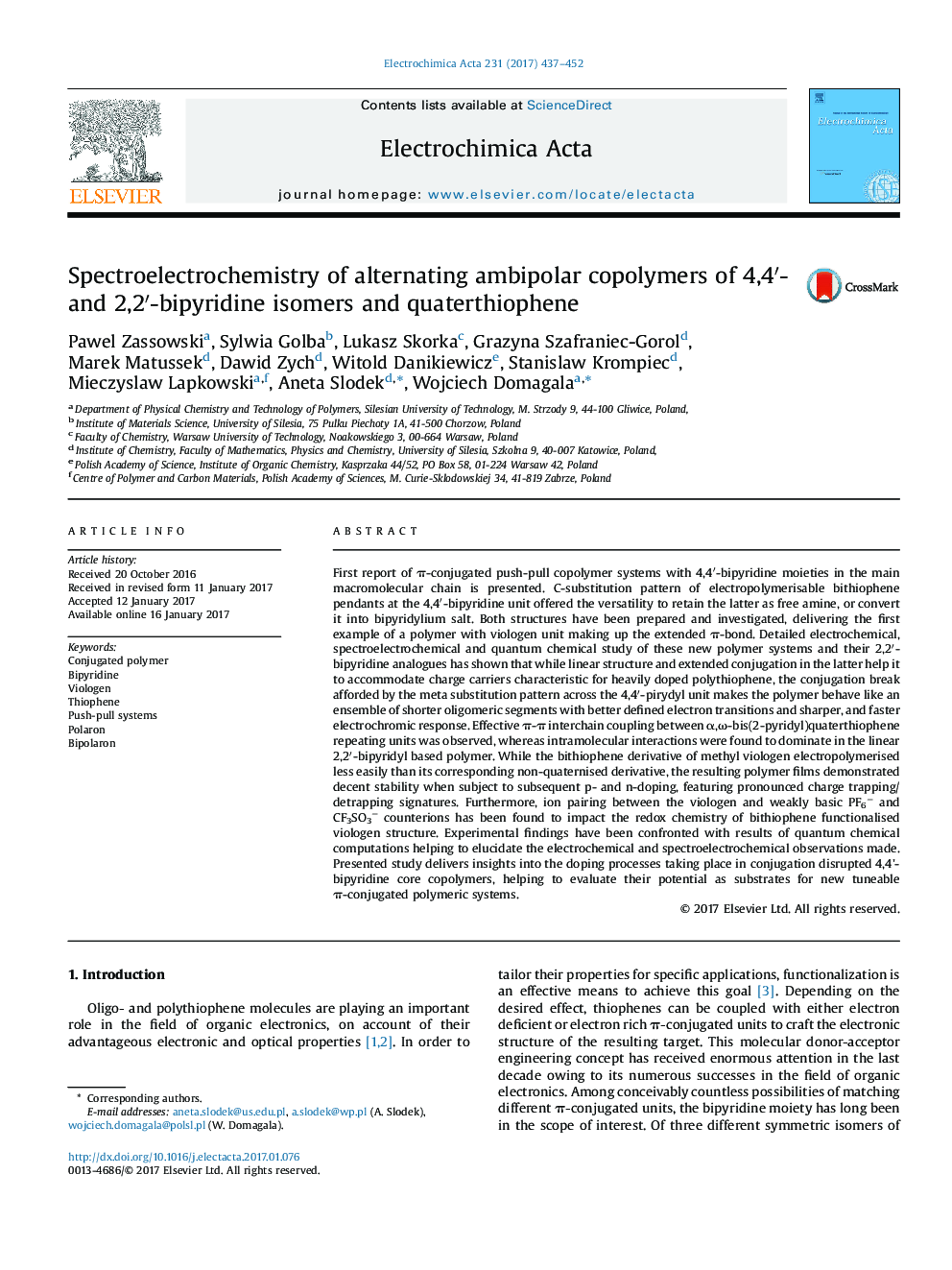| Article ID | Journal | Published Year | Pages | File Type |
|---|---|---|---|---|
| 6472057 | Electrochimica Acta | 2017 | 16 Pages |
â¢New 4,4â²-bipyridine derivatives C-substituted with bithiophene groups were prepared.â¢Their polymerisation afforded novel polymers with 4,4â²bipyridine and viologen groups in the main chain.â¢Conjugation disruption in 4,4â²-bipyridine copolymers stabilises doping induced polarons.â¢4,4â²-bipyridine copolymer chain topology promotes intermolecular Ï-Ï interactions.â¢The viologen repeating unit copolymer demonstrates strong charge trapping/detrapping effects.
First report of Ï-conjugated push-pull copolymer systems with 4,4â²-bipyridine moieties in the main macromolecular chain is presented. C-substitution pattern of electropolymerisable bithiophene pendants at the 4,4â²-bipyridine unit offered the versatility to retain the latter as free amine, or convert it into bipyridylium salt. Both structures have been prepared and investigated, delivering the first example of a polymer with viologen unit making up the extended Ï-bond. Detailed electrochemical, spectroelectrochemical and quantum chemical study of these new polymer systems and their 2,2â²-bipyridine analogues has shown that while linear structure and extended conjugation in the latter help it to accommodate charge carriers characteristic for heavily doped polythiophene, the conjugation break afforded by the meta substitution pattern across the 4,4â²-pirydyl unit makes the polymer behave like an ensemble of shorter oligomeric segments with better defined electron transitions and sharper, and faster electrochromic response. Effective Ï-Ï interchain coupling between α,Ï-bis(2-pyridyl)quaterthiophene repeating units was observed, whereas intramolecular interactions were found to dominate in the linear 2,2â²-bipyridyl based polymer. While the bithiophene derivative of methyl viologen electropolymerised less easily than its corresponding non-quaternised derivative, the resulting polymer films demonstrated decent stability when subject to subsequent p- and n-doping, featuring pronounced charge trapping/detrapping signatures. Furthermore, ion pairing between the viologen and weakly basic PF6â and CF3SO3â counterions has been found to impact the redox chemistry of bithiophene functionalised viologen structure. Experimental findings have been confronted with results of quantum chemical computations helping to elucidate the electrochemical and spectroelectrochemical observations made. Presented study delivers insights into the doping processes taking place in conjugation disrupted 4,4'-bipyridine core copolymers, helping to evaluate their potential as substrates for new tuneable Ï-conjugated polymeric systems.
Graphical abstractDownload high-res image (180KB)Download full-size image
